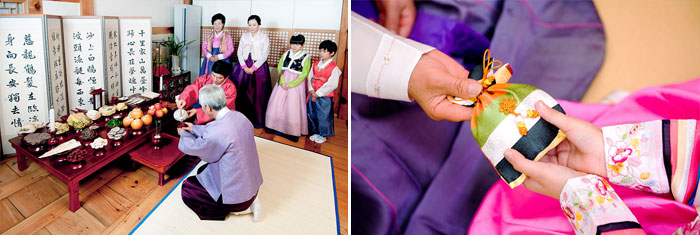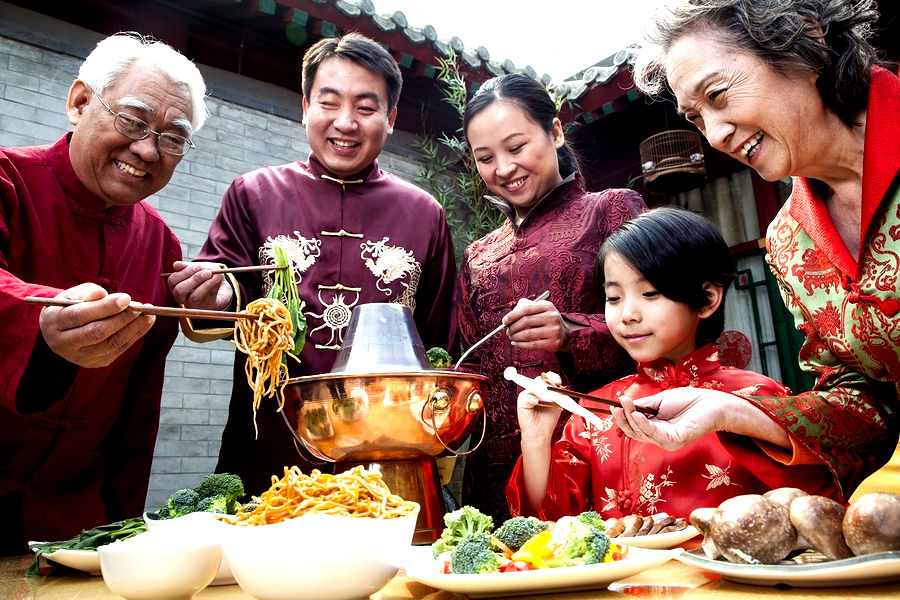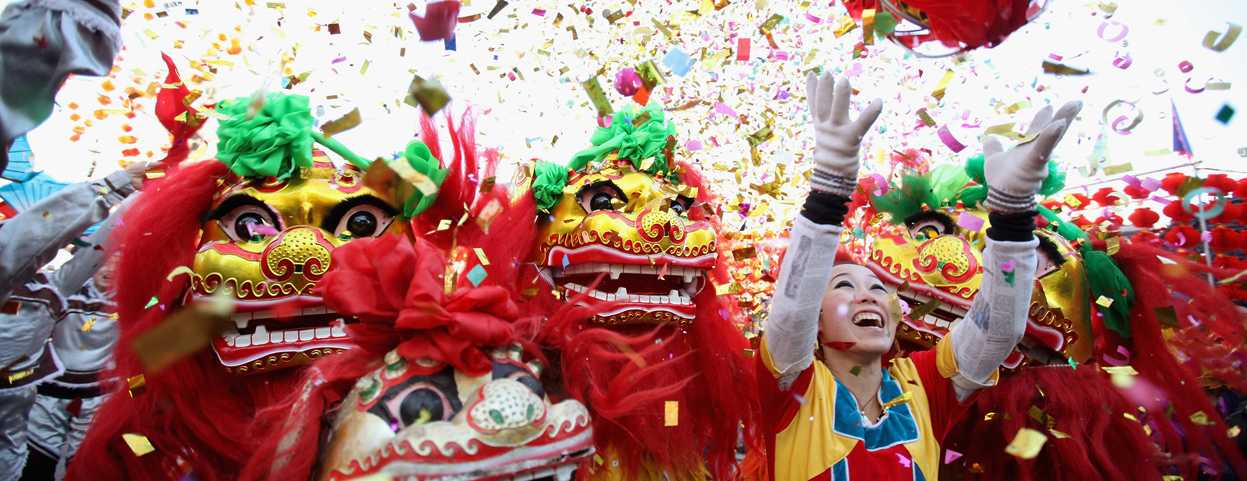What is the Lunar New Year?
January 27, 2017
“Happy New Year,” Mr. Wong greets Ms. Law.
“Happy New Year, Christine,” Ms. Law says to me.
The New Year happened on January 1, 2017, so what are they talking about?
They are talking about the Lunar New Year on Saturday, January 28, based on the first day of the lunar calendar, which is coordinated by the cycles of the moon. Lunar New Year is better known as Chinese New Year, but it is also celebrated by Japanese, Korean, Mongolian, Tibetan, Vietnamese, South Asian, and other people. This year is the Year of the Rooster.
Lunar New Year is marked with a unique, relatively unknown Eastern history, although it is one of the most important celebrations in China. It signals the beginning of spring, which was an especially important time of year in China’s history. Oracle bones with astronomical signs of Shang China date the celebration of the Lunar New Year back to at least the 14th century B.C.E., and Koreans recorded celebrating in during the Silla and Joseon Dynasties. Farmers would make offerings to gods and celebrate, wishing for luck for a prosperous and fertile year for their crops. The calendar used by Eastern Asia is called the Earthly Branches, or the twelve branches, built from observations of Jupiter’s orbit. Astronomers had divided Jupiter’s orbit into twelve sections, to round into twelve years. Twelve, specifically, correlates with the twelve months, twelve zodiac animals, and the double-hour. Many people have heard of their zodiac animals, such as Rooster, Dog, and Dragon, but do not really know of their significance. Unlike the Western zodiac, which relates to the twelve months, the Eastern Asian zodiac animals are assigned to different years, repeating every twelve years, in the order: Rat, Ox, Tiger, Rabbit, Dragon, Snake, Horse, Goat/Sheep, Monkey, Rooster/Chicken, Dog, Pig. While lesser known, there are animals assigned to months—called inner animals, days—called true animals, and hours—called secret animals. While I was born into the year of Rooster, I may be a Tiger internally, or a Dragon secretly. In Eastern Asian culture, the sign one was born into represented one’s personality and future, and even one’s compatibility with others in relationships and marriage. Animals were used as mneumonics of time, because they were easier and more fun to remember. For example, 7:00 AM to 8:59 AM marks the time of the Dragon, when Dragons are soaring the skies to make rain. In addition, there is a folk story of the Great Race, in which the Jade Emperor declared that the years of the calendar would be named in order of the animals that reach his kingdom. Finally, a Buddhist legend says that Buddha summoned all of the animals on Earth before his departure, but only twelve animals bid him farewell, whom he rewarded by naming each year after them. The Spring Festival in China, however, in a relatively new celebration. While Chinese New Year was celebrated for centuries, there was a temporary break during Mao Zedong’s reign, after Western missionaries helped set the New Year to January 1. At the end of the twentieth century, China embraced its rich history again, such as its New Year, and in 1996 the Spring Festival was created, an official, weeklong vacation. While the religious undertones of the New Year is not a primary focus, the zodiac animals are important in the celebrations and the predictions for the coming year. Like Christmas, more than a religious holiday, it is a chance to give gifts, relax, and celebrate with family and friends. Saturday, January 28 marks the transition from the Year of the Monkey to the Year of the Rooster (or bird in Tibetan and Nepalese cultures). The Rooster is symbolic of energy, alacrity, diligence, and hard work.


In Eastern Asia, different countries celebrate in unique ways on this same holiday. For example, in China, married couples give red envelopes with money to younger, unmarried people and children. Typically, the money was in the amount of an even number, because odd numbers are associated with the amount of money given during funerals. Numbers are determined even by the first digit, so numbers such as thirty and fifty are considered odd. Commonly, eight monetary bills are given to signify wealth, or six monetary bills to signify a smooth year. Four is considered bad luck, signifying death. In addition, people usually give new bills, to symbolize the new year, wealth, and luck, which can become busy for banks during the holiday, as Eastern Asians line the banks for a limited amount of new, crisp bills. Besides money, friends and family also exchange gifts. However, there are certain items considered taboo that should not be given, such as items given during a funeral. Clearly, there is a clear separation between symbols of death and symbols of celebration and happiness, although China does celebrate and honor the dead. Chinese New Year is also associated with the use of fireworks, to scare off evil spirits and to symbolize the celebratory time of the year. In Chinese culture, people wear bright red clothing, as red is known to ward off evil spirits and bad fortune, and it is a sign of good luck, and new clothes to indicate the new year. In Korea, the New Year, or Seollal, is a three-day celebration, in which people bow to their elders, have a big feast, wear traditional hanbok, and play traditional games, such as Go. The bow, accompanied with a common phrase (translated: Please receive good fortune for the New Year) is important for Koreans to respect their elders, and in return they receive money in silk bags. One of the most important foods during the Korean feast is rice cakes, or tteok. In Japan, the Little New Year—much more popular before 1873—is celebrated my religious practices, temple events, prayers for bountiful harvest, and eating. In Vietnam, people visit their ancestors’ graves to clean them as a sign of respect. Similar to China, Vietnamese people exchange red envelopes and wear new clothing. According to tradition, if good things occur on New Year’s Day, the year will be filled with blessings and good luck. In addition, the first visitor of the house will determine the fortune of the family for the year; if a good person enters the house, the year will be filled with success. To prevent misfortune, the owner of the household will leave the house in the last minutes of the day and reenter after midnight strikes to make sure no one who would bring bad luck could come. Like in China, taboo is an important aspect of Vietnamese culture.
Today, while people still celebrate the Lunar New Year, technology, globalization, and modernization has brought upon a new interpretation of the cultural holiday. For example, in tradition it is important to give new bills to juniors. However, when banks lose all their new bills to New Year celebrators, people need a new solution. With smartphones, people can now use the app, WeChat red envelope, to give virtual money. On January 1, 2016, the company reported about 2.3 billion transactions, and it expects more for the coming Lunar New Year. However, the new technology has increased the emphasis on money for the celebration. In addition, globalization has affected the Lunar New Year. In countries such as South Korea, people veer away from traditional outfits and wear Western-style clothing for the celebration. In the United States, areas with a high Asian population such as New York and California will have big New Year celebrations. The Empire State building, for example, will light up in red and blue to symbolize the Chinese New Year. Today, like most holidays, the Lunar New Year is easily accessible, and people can participate by engaging in common customs, such as respecting their elders, exchanging gifts, cleaning up to ward off bad spirits, and celebrating Eastern culture.


The New Year is celebrated by most, if not all, of the world. In the majority of the world that uses the Gregorian calendar, the New Year begins on January 1st, and it used to be on April Fools’ Day, April 1st. To keep with history and tradition, Asians celebrate the New Year again on January 28th to follow with the lunar calendar. The Tamil New Year is accompanied by a temple festivities, house feasts, and decorations. The Water New Year, celebrated by many Southeast Asian countries, was when people sprinkled water on one another as a sign of respect, though today people just spray each other with hoses because of the hot weather. In Jewish tradition, Rosh Hashanah is a two-day celebration of the Seven Days of Creation, and people eat honey and apples for a sweet new year. The Islamic New Year marks the first day of the Islamic calendar, slightly different than the lunar calendar.
Lunar New Year has a rich history and is celebrated by billions of Asians around the globe. Locally in New York, events such as New York Philharmonic performances of Asian folk music, Year of the Rooster theatrical shows, fireworks, Asian restaurant specials, and more will occur, for everyone to participate in the festivities of the New Year.
